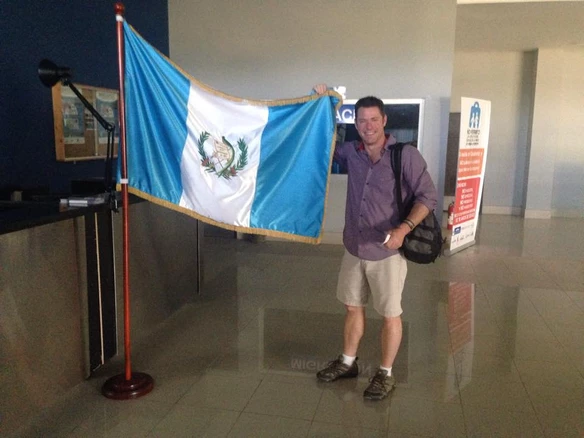
The Heart of the Mayan World – Guatemala, Hope and an Era of Peace!
Among all of the countries of Central America, Guatemala is the most populated, most diverse and culturally the richest. I have returned to the Mayan heartland many times and, in fact, it was here I first studied Spanish (in 1998)!

Tikal – the ancient Mayan Capital. On par with Machu Picchu as an archaeological site
Roughly half of Guatemala’s rapidly growing population is ethnically Mayan and the borders of the country contain at least 20 distinct Mayan languages – and they can still be heard.
To that end, Guatemala’s borders echo the typically contrived echo of colonial manipulation. The heart of the Mayan world is certainly Guatemala, but the cultural region reaches from Mexico (Yucatan and Chiapas), into (English-speaking) Belize as well as Honduras and El Salvador.
Guatemala’s history is not easy or happy, but before climbing into some of the atrocities, let me emphasize how impressed and happy I am with the changes in this country!
It has been at least six years since my last visit and nearly 20 since I first took a bus from Belize to Guatemala’s jungly northern region of Petén. Back then – two year hence of a 36 year civil war, Guatemala was poor. Really poor.
It still is, but the roads have improved, the border was friendly (although it still extracted money) and the economic development would be overwhelmingly obvious to anyone who has visited in the past.
The big, dirty and crowded capital of Guatemala… is starting to look a little shiny with concerted efforts clean the roads, although crime remains a huge problem.
In the rest of this diverse country, the Mayan languages really appear to be hanging on and there are now Mayan deputies in government! Only about 8%, but this is from absolutely nothing. Guatemala’s now more stable currency – the Quetzal (named after the magnificent national bird) now proudly exhibits the notes’ value in both Roman & Mayan numerals.
I take nothing away from the large mestizo population in Guatemala, but wrestling control from the few oligarchic families who have controlled the economy (through brutality, intervention and the once-mighty United Fruit Company), shall only happen with pluralistic economic and political participation.
Population growth – as with all the neighbours in the region – is simply out of control. The Catholic Church competes with the many evangelical, Mormon and JW centres of faith that dot the landscape. Many of these Protestant groups entered during the dictatorship of Rios Montt in 1982. Others were invited over 100 years ago.
Montt, who was sponsored by the CIA and a close friend of Jerry Falwell and Pat Robertson is now an old man, but remains controversial in Guatemala (here is a supportive Christian publication grudgingly acknowledging his guilt).
He has been tried and convicted of genocide and, in my mind, deserves to spend his remaining years rotting in a Mayan-run prison.
But of course the drawn-out Guatemalan civil war has much blame to go around. It reeked of cold war conflicts. Unlike the clear ideological battles in other parts of the Americas, the Guatemalan conflict was indeed based upon the utter exclusion of the Mayan majority. An American-style, post-slavery apartheid.
I would have been angry too.
Yet Guatemala in 2015 has not only enjoyed nearly 20 years of peace – it survived the end of the world in 2012! I do not want to put either a link to Jesse Ventura’s predictions based on the Mayan Calendar (because he has dived off the deep end) and nor do I want to support Mel Gibson’s entirely erroneous film because it totally misrepresents Mayan history (and because he is an anti-semite).
But back to peace. Peace and stability really appear to work.
I have long loved Guatemala’s landscapes and cultures and it would appear I can enjoy them more easily. Improvements in services are all around, but the identity – if anything – seems a little more confident.
The Guatemalan social fabric has to be among the most complicated on the planet. At least 24 languages, tight-knit Mayan communities described by the patterns on their (wonderfully colourful) clothes, a large mestizo community making the best of a rough Capital city and painful echo of the United Fruit Company and of course active volcanoes and tectonic faults (this is, of course Central America).
Guatemala’s first colonial capital, Antigua, was destroyed by an earthquake in 1773. Although rebuilt, it really does feel like an 18th century city.
For me, the real magic of Guatemala happens both in the archeological sites of the high Mayan period and in the rural highland.
Guatemala has so very much to discover, climb, hike and study. This country is – or should be – one of the world’s major destinations.
Corruption remains a problem and the same gang violence that haunts Honduras and El Salvador is widespread, but I feel safe and welcome – albeit a little like a walking dollar sign, particularly in popular tourist areas.
Please have a look at some of my photos for a little tease of some of Guatemala’s diversity!
Lastly, I really want to mention the Garifuna people. I didn’t get to their community of ‘Livingstone’ on this trip, but I want to return. The Garifuna are Afro-Caribbean people who live primarily in Honduras, Belize and Guatemala. They resisted the British, the French and the many conflicts in republican times. And their music is cool! But that will have to be another trip… (Check the Garifuna Collective and the Canadian Danny Michel on the video below.)
Please follow and like us:

#belize #guatemala #garifuna #MayanCalendar #ElSalvador #peten #volcanoes #centralamerica #quetzal #UnitedFruitCompany #mayan #Honduras #antigua
